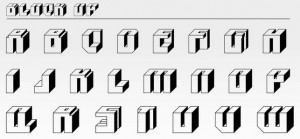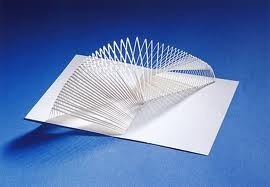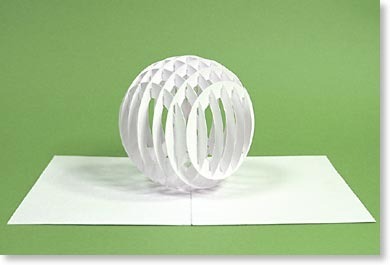Origamic Architecture
As many of you know, I’m writing a new book called Playing With Pop-Ups. I’m in the home stretch… my final manuscript is due July 1. I find this deadline both nerve wracking and relieving! But let me be the first to say that I’ll be smiling come July 1.
Pop-Ups were actually my entrée into the world of paper. Back in 1986, when I was an exchange student in Germany, I stumbled across a three-dimensional alphabet.
I soon became obsessed with rendering it in three dimensions. It wasn’t as easy at it looks!
I’ve had mixed results when showing this image to people. Some people see it and some don’t. How about you – can you read it?
This work led to the discovery of Origamic Architecture (OA), which was a new medium back then (in the 80′s). A Japanese architect, Masahiro Chatani, is credited with developing this form of working with paper. He did some fascinating paper sculptures: pop-ups and slice forms.
This is one of his simple forms. I love it for the simple elegance. When you collapse it (or stretch the base sheet) it returns to its original state (a flat sheet of paper). In other words, just through cuts and folds, the paper transforms into three dimensions.
Here is another form that Chatani developed: the sliceform, which involves several slices of paper that are interlocked, kind of like a house of cards.
I recently made contact with Andrew Crawford, who carries a line of Chatani’s cards as well as products from other OA experts on his website. Chatani authored several books featuring projects and templates.
He also has a following, and there are many paper engineers today who are practicing and advancing OA. Two of them will be featured in Playing With Pop-Ups.
Ingrid Siliakus (who is also featured in Playing With Paper) spends up to a year developing some of her intricate paper sculptures.

Cosmopolitan, by Ingrid Siliakus

Equinox, by Ingrid Siliakus
Siliakus has also authored The Paper Architect, featuring templates for buildings you can fold yourself.
Elod Beregszazi is newer on the scene. He runs this website, Popupology, featuring a new line of pop-up jewelry, kinetic surfaces, and many DIY projects. Keep a look out for the project that Beregszazi contributed to Playing With Pop-Ups.

San Marco, by Popupology
I’m going to leave you there for now. There are others who are pushing the limits with Origamic Architecture. Do tell us who you know about by leaving a comment below.
Now, back to finishing my book!
Related Posts
 18: Pop-Ups
18: Pop-Ups
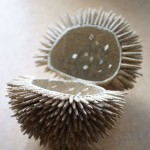 15: Rolled, Crimped, Scrunched & Wrapped
15: Rolled, Crimped, Scrunched & Wrapped
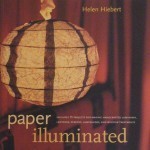 On Writing Books – Part Two
On Writing Books – Part Two
 The Bookworm
The Bookworm
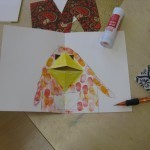 The Paper Club
The Paper Club

